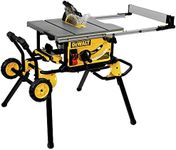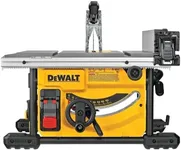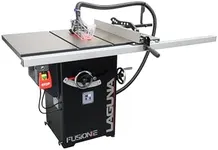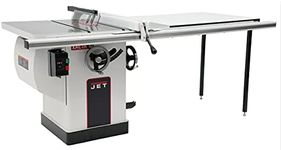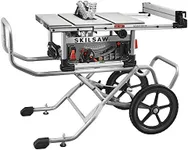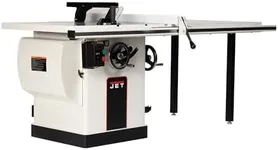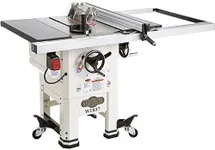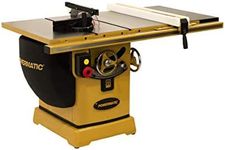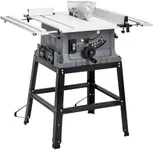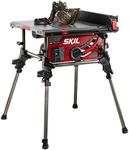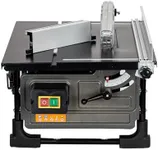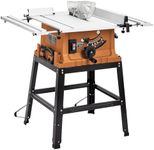Buying Guide for the Best Hybrid Table Saws
Choosing the right hybrid table saw can be a game-changer for your woodworking projects. Hybrid table saws combine the best features of contractor and cabinet saws, offering a balance of power, precision, and portability. To make an informed decision, you need to understand the key specifications and how they align with your specific needs. Here are the essential specs to consider when selecting a hybrid table saw.Motor PowerMotor power, measured in horsepower (HP), determines the saw's ability to cut through different types of wood. A motor with higher horsepower can handle thicker and harder materials more efficiently. Typically, hybrid table saws come with motors ranging from 1.5 HP to 3 HP. For hobbyists and light-duty work, a 1.5 to 2 HP motor is usually sufficient. For more demanding tasks or professional use, consider a motor with 2.5 to 3 HP.
Rip CapacityRip capacity refers to the maximum width of material that can be cut to the right of the blade. This is crucial for cutting large sheets of plywood or wide boards. Hybrid table saws generally offer rip capacities between 30 to 50 inches. If you primarily work with smaller pieces, a rip capacity of around 30 inches should suffice. However, if you frequently cut large panels, look for a saw with a rip capacity closer to 50 inches.
Fence SystemThe fence system is a guide that helps you make straight and accurate cuts. A good fence system should be sturdy, easy to adjust, and lock securely in place. There are various types of fence systems, but the most common are T-square and rack-and-pinion. For general woodworking, a T-square fence is reliable and easy to use. If you need more precision and ease of adjustment, a rack-and-pinion system might be a better choice.
Dust CollectionDust collection is important for maintaining a clean and safe working environment. Hybrid table saws typically come with dust ports that can be connected to a vacuum or dust collection system. The size of the dust port usually ranges from 2.5 to 4 inches. For effective dust management, ensure that the saw's dust port matches your existing dust collection setup. A larger port generally offers better dust extraction.
Table Size and Extension WingsThe size of the table and the presence of extension wings affect the stability and support of your workpiece. A larger table provides more support for bigger projects, while extension wings can be added to increase the working surface. If you have limited space or work on smaller projects, a standard table size should be adequate. For larger projects or if you need more support, look for a saw with extension wings.
Blade TiltBlade tilt refers to the ability of the saw blade to tilt to the left or right for making bevel cuts. Most hybrid table saws offer a left-tilt blade, which is generally considered safer and more convenient for right-handed users. The tilt range is usually up to 45 degrees. If you frequently make bevel cuts, ensure that the saw has a smooth and easy-to-adjust tilt mechanism.
Safety FeaturesSafety features are crucial to prevent accidents and injuries. Common safety features include a riving knife, blade guard, anti-kickback pawls, and a magnetic switch. A riving knife helps prevent kickback by keeping the cut pieces from pinching the blade. A blade guard protects your hands from the blade, while anti-kickback pawls prevent the workpiece from being thrown back at you. A magnetic switch prevents the saw from restarting after a power outage. Prioritize saws with comprehensive safety features to ensure a safe working environment.
